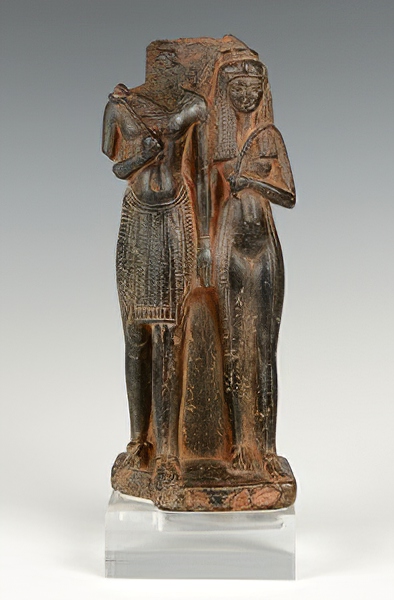Egypt and Sudan at the Oriental Museum in Durham, England
Egypt and Sudan at the Oriental Museum in Durham, England. - There are more than 7,000 objects in the Oriental Museum's Ancient Egyptian collections, ranging in date from the Pre-Dynastic (5500-3100 BCE) to the Coptic periods (after 395 CE) and covering almost all categories of object from monumental sculpture to woven sandals. The core of the collection was formed by Algernon Percy, the Fourth Duke of Northumberland (1792-1865) in the mid-nineteenth century. The Duke had developed a fascination for Egypt following his visit to the country in 1826 and in later years he developed large collections of both British and Egyptian antiquities, which he proudly displayed at the family seat of Alnwick Castle.
Image: Steatite dyad of Amenhotep I and Queen Ahmose Nefertari. Amenhotep I is thought to have still been young when he came to the throne and so his mother Ahmose-Nofretiri appears to have acted as his regent. They are believed to have founded the workmen’s village now known as Deir el-Medina, which provided the skilled workforce responsible for building and decorating the tombs in the Valley of the Kings. As a result, a cult dedicated to the royal mother and son grew up in the area and this statue probably came from a shrine located there. Image courtesy of the Oriental Museum of Durham University.




Comments
Post a Comment